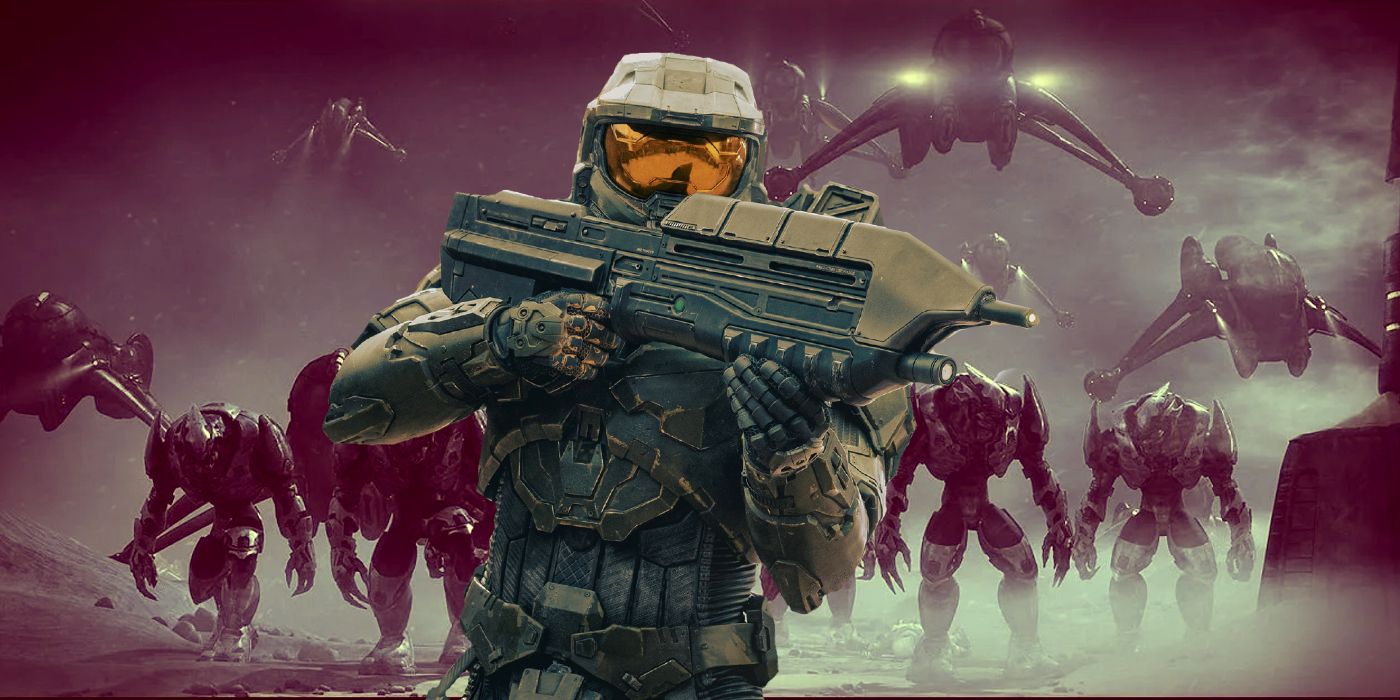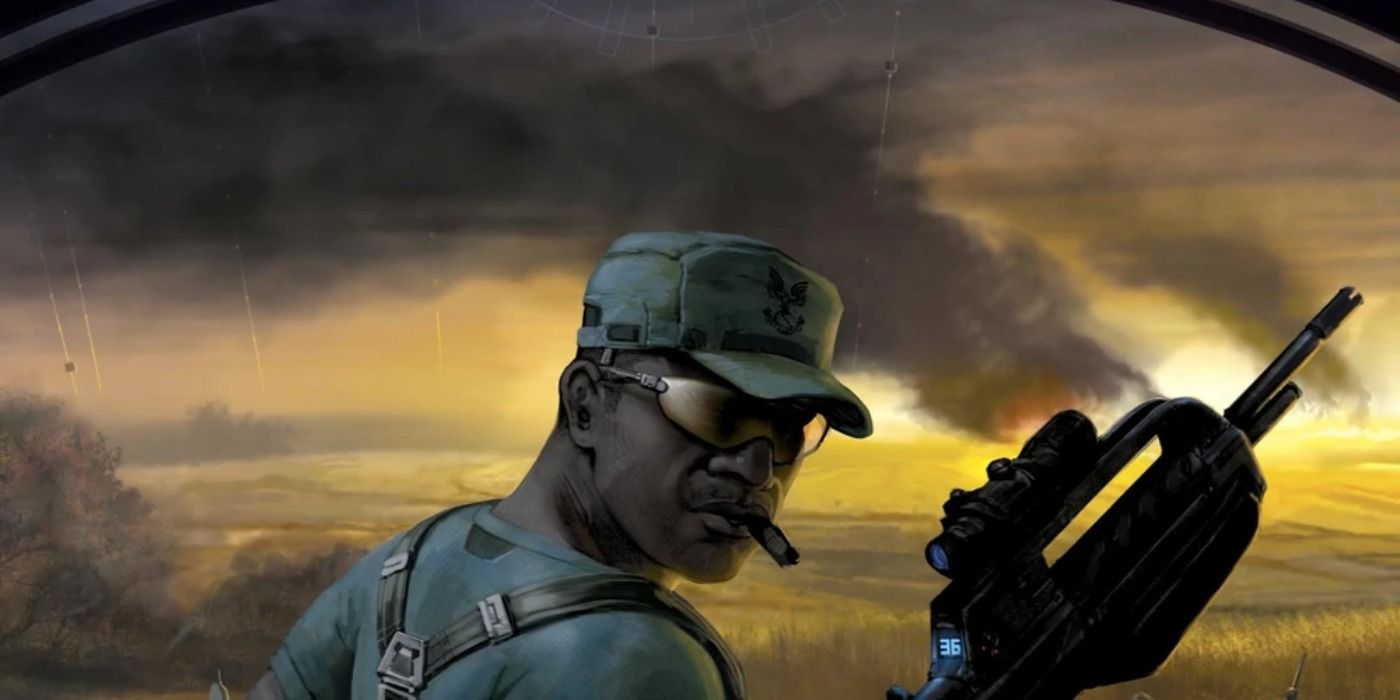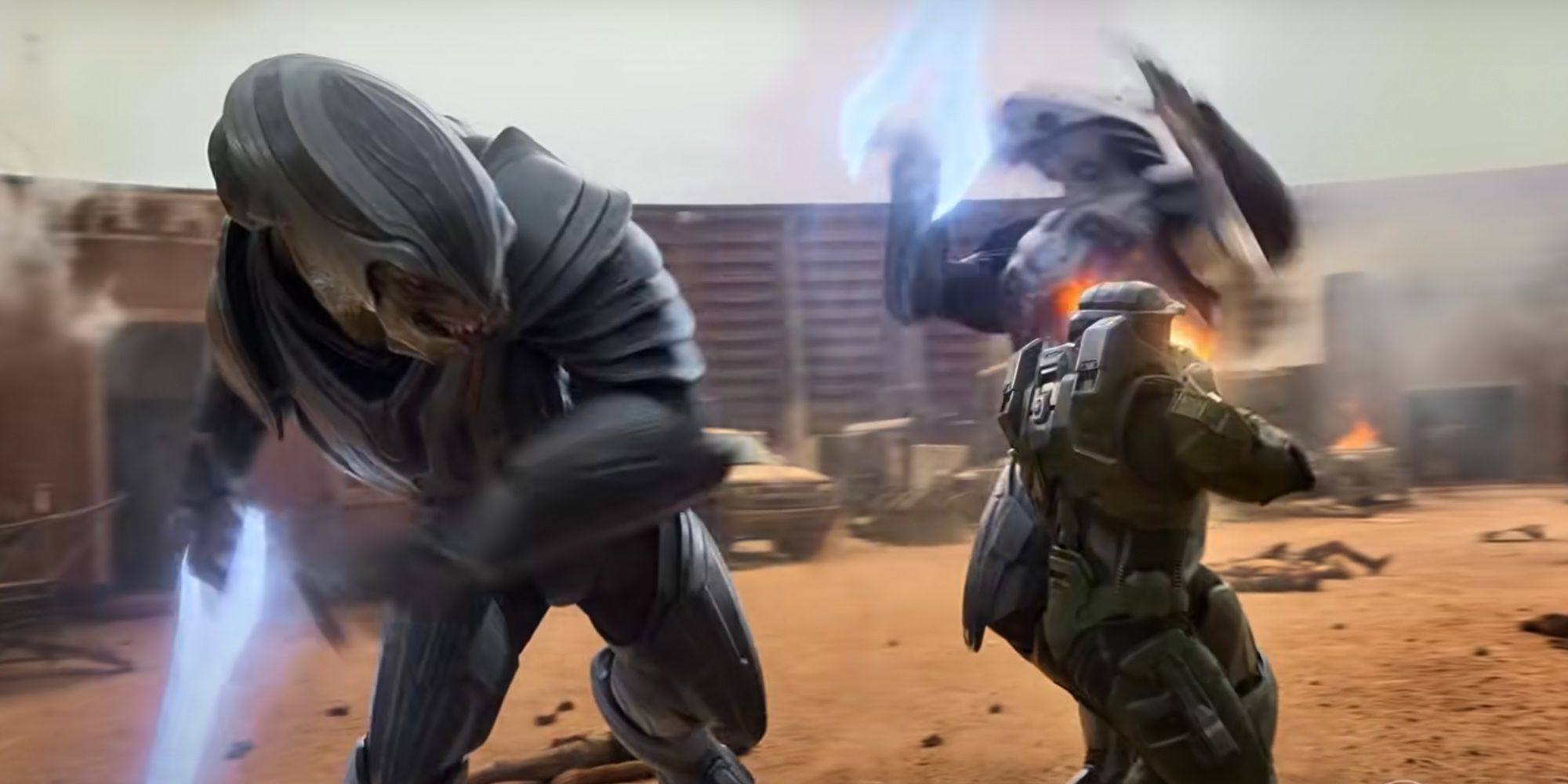
Halo's Human-Covenant War was a brutal conflict that brought humanity to the brink of extermination. The first Halo game released for the Xbox in 2001, introducing players to the Master Chief and an alien Covenant who threatened to wipe out the human race. A phenomenal success, the first-person shooter inspired numerous sequel games and tie-ins. It's now serving as the inspiration for a Paramount TV+ series.
Led by their Prophets, the Covenant is an alliance of different races who are motivated by a religious zeal to follow in the footsteps of an ancient race called the Forerunners. The Prophets have assured them human beings are fit only for extermination, and they will go to any lengths necessary to achieve that goal. Making matters worse, for much of the conflict the true motives of the Covenant remained a mystery, meaning Earth's UNSC - United Nations Space Command - was always on the back foot. Fortunately, humanity had champions; Spartans, most notably the Master Chief, John-117.
Of course, the Paramount TV+ adaptation may not follow quite the same Halo timeline. Still, the Halo trailers have made it clear the show hews close to the original source material, so viewers may well want to understand how the Human-Covenant War panned out in the games and novels. Here's a full history of the Human-Covenant War.

The beginning of the Human-Covenant War began in the year 2524, with the first contact between humans and the Covenant. The tale is told in Joseph Staten's novel "Contact Harvest." A Covenant missionary ship stumbled upon an unmanned human cargo ship that had dropped out of slipspace after a malfunction in its slipspace drive; to the Covenant's surprise, their systems identified what seemed to be thousands of Forerunner artifacts and an Oracle on the nearby agricultural planet Harvest. It didn't take long for the Covenant to arrive at Harvest in force, and an initial attempt to negotiate a peace treaty swiftly collapsed. The Covenant was initially driven back, but returned in force to glass the planet some months later. In the aftermath, three new Prophets took command of the Covenant - the Prophets of Truth, Regret, and Mercy - and they declared that humanity must be annihilated. Analysis of signals from Harvest had proved the human race to be the Forerunners' heirs; humans could have shattered the Covenant, and the Prophets could not risk this truth being revealed.

The Covenant used devices called Luminaries - originally keyed to detect Forerunner artifacts - to locate human worlds. They launched a string of attacks on colony worlds, with the forces of the UNSC essentially running a fighting retreat; the Spartans were their only effective weapons against the Covenant, swiftly dubbed "demons" by the religious zealots. The Covenant had one terrifying advantage; because their goal was nothing less than the extermination of every human being, they rarely needed to commit to ground battles, instead settling for bombarding colony worlds from space and glassing them. The UNSC responded by giving Admiral Preston Cole command of a massive fleet, and assigning him to retake Harvest. He was successful, and began harrying Covenant forces across the Outer Colonies.
Admiral Cole understood the greatest risk to humanity lay in the possibility the Covenant would discover a major inhabited world - or, worse still, even Earth. To that end, the admiral would ultimately draw up the so-called "Cole Protocol" - an order that the navigational records of any vessel that encountered the Covenant needed to be wiped, so the Covenant could gain nothing from any husk. Teams of Spartans enforced the Cole Protocol, sent to civilian worlds or Insurrectionist bases to ensure key locations were erased. Unfortunately, after another battle at Harvest - one that saw the Covenant unearth an ancient Forerunner artifact - Cole realized his best efforts had failed. The Covenant had discovered the location of a major colony world, Arcadia.

The Covenant attacked Arcadia in force, convinced the colony world - inhabited by some three million people - possessed Forerunner relics. Fortunately for the colonists this meant the Covenant chose not to glass the planet, and UNSC reinforcements soon engaged the Covenant in a series of ground battles. In a sense, both sides achieved their objective at Arcadia; the Covenant successfully accessed ancient Forerunner star-maps, while the UNSC managed to evacuate most of the colonists. The fall of Arcadia led the Covenant to a Forerunner Shield World, a potential military installation that would have massively boosted their power, but fortunately the UNSC pursued the Covenant to this Shield World and destroyed it. This story is told in the Halo Wars game, and marks a turning point in the Human-Covenant War - because at last humanity began to understand the artifacts the Covenant was seeking.
By 2534, it was clear humanity was in serious trouble. The UNSC responded by drawing up draconian laws governing space travel - resulting in another wave of Insurrectionist uprisings, with many Insurrectionists refusing to believe the Covenant truly existed. Finally, in 2536 the Covenant broke through into the Inner Colonies, leading to a wave of defeats over the next two decades. World after world fell, with humanity desperately attempting to push the Covenant back, but failing. This culminated in the legendary Fall of Reach in 2552, with one ship - the Pillar of Autumn, containing Spartan Master Chief John-117 - escaping to coordinates retrieved from a Forerunner artifact. Though the humans did not realize it, they had discovered the location of a Halo Ring.

The Pillar of Autumn had stumbled upon a Halo Ring in August 2552 after escaping the Fall of Reach, and Spartan Master Chief John-117 discovered the installation's true purpose; to destroy potential food sources for the parasitic infestation known as the Flood by wiping out all life in the area of the galaxy around the ring. This story is told in the first Halo game, with the Covenant attempting to activate the Halo Ring because they believed it would allow them to ascend to another plane of existence. The Master Chief managed to destroy the installation, and he and other UNSC survivors escaped by capturing a Covenant flagship, Ascendant Justice - as told in Eric Nyland's tie-in novel "Halo: First Strike."
The destruction of this Halo Ring led to an escalation of conflict - with the Covenant even launching an attack on Earth. But the discovery of more Halo Rings led to a Flood infestation on the Covenant's capital, High Charity, almost wiping the Prophets out. Meanwhile, the Master Chief's continuing crusade began to tear them apart, with the Elites and the Brutes turning on one another; the Elites ultimately left the Covenant, siding with humanity against the religious leaders who had deceived them. Matters came to a climax when the Prophet of Truth attempted to activate all the Halo Rings (or Halo Array) across the galaxy, but he too was defeated by the Master Chief. And so the greatest war in humanity's history came to an abrupt end, when the greater force - the Covenant - collapsed. The end would have been very different if not for the Master Chief, the hero of the Halo games.
Comments
Post a Comment